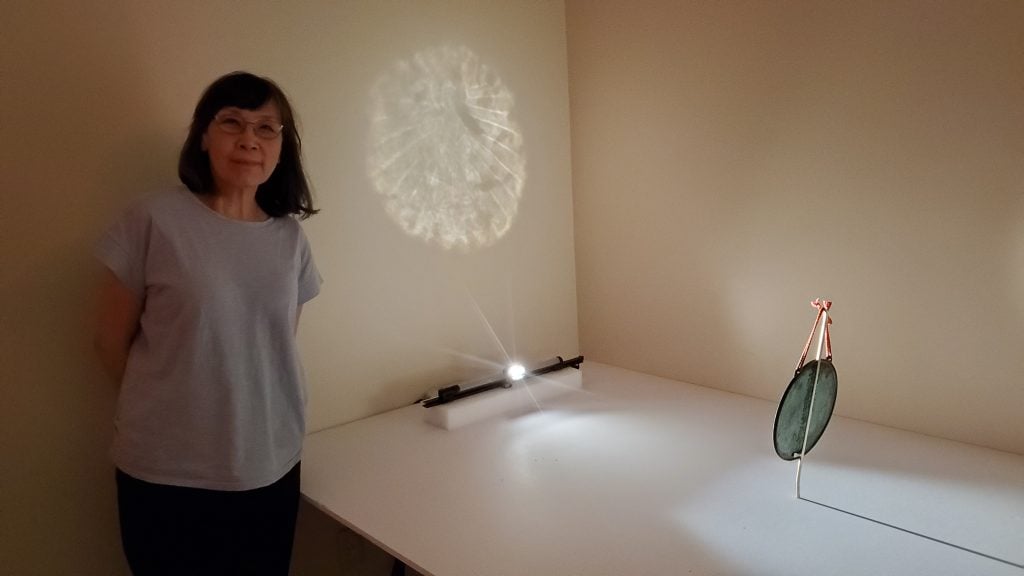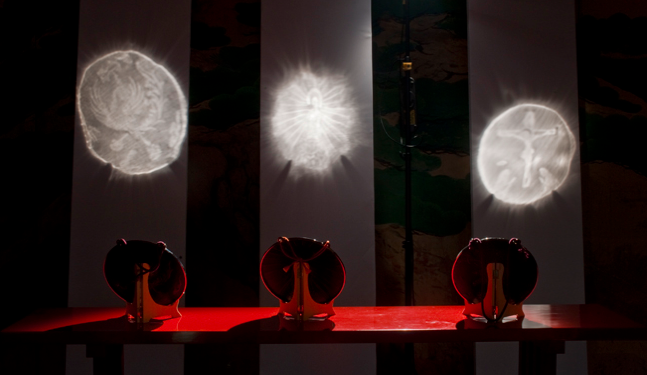Chinese magic mirror: the precursors of film and movie
The Chinese magic mirror, also known as a bronze mirror, is a type of ancient Chinese mirror that was typically made of bronze and had intricate designs etched onto the back. These mirrors were believed to have magical properties and were used in a variety of rituals and ceremonies, such as ancestor worship and divination.
In terms of the relationship between the Chinese magic mirror and the precursors of film and movie, it is important to note that the invention of the camera obscura in the Renaissance period laid the foundation for the development of photography and motion pictures. The camera obscura is a device that uses a lens to project an inverted image of the outside world onto a screen or surface inside. It is believed that this technology was inspired by the ancient Chinese technique of using a small hole to project an inverted image of the sun onto a surface.
It's also worth mentioning that the invention of the zoetrope in the 1800s, which is an early form of animation, also laid the foundation for motion pictures. The zoetrope is a cylinder with slits cut into the sides that, when spun, creates the illusion of motion through a series of static images. This technology too, could have been inspired by the ancient Chinese tradition of using spinning disks with pictures on them to create the illusion of motion.
While the Chinese magic mirror may not have directly led to the invention of film and movie, it is clear that many early technologies and techniques that were important in the development of these mediums have roots in ancient Chinese culture and technology. This relationship highlights the important role that ancient cultures and technologies have played in shaping modern society and the impact they still have on the world today.
Chinese magic mirror in Japan.
As the production of mirrors grew in China, it spread to neighboring countries such as Korea and Japan. Historical records show that Emperor Cao Rui and the Wei Kingdom of China gifted large numbers of bronze mirrors (known as Shinju-kyo in Japan) to Queen Himiko of Wa (Japan), where they were highly valued as rare and mysterious objects. These mirrors were said to be "sources of honesty" as they were believed to reflect all good and evil without error. This is why Japan holds a sacred mirror called Yata-no-Kagami as one of its three great imperial treasures.
Today, Yamamoto Akihisa is considered to be the last remaining manufacturer of magic mirrors in Japan. The Kyoto Journal interviewed the craftsman, who shared some of the techniques he learned from his father.
Chinese magic mirror in Western Europe.
For centuries, the mysterious nature of these mirrors captivated both the general public and scientists alike, who dedicated themselves to researching this subject.
The first magic mirror to be introduced in Western Europe was owned by the director of the Paris Observatory. Upon his return from China, he brought back several mirrors, one of which was magical. This mirror was presented as a mysterious and unknown object to the French Academy of Sciences in 1844. Despite extensive study, no one could fully understand its behavior. In total, only four magic mirrors were brought from China to Europe.
However, in 1878, two engineering professors presented several models they had obtained from Japan to the Royal Society of London. The English referred to these artifacts as "open mirrors" and for the first time made technical observations about their construction. The mirrors' effects were so mesmerizing that the Royal Society was captivated by them, but no one could determine what caused the eerie and beautiful projection of light which they classified as an "impossible optical illusion" and thus "magical".







Comments
Post a Comment